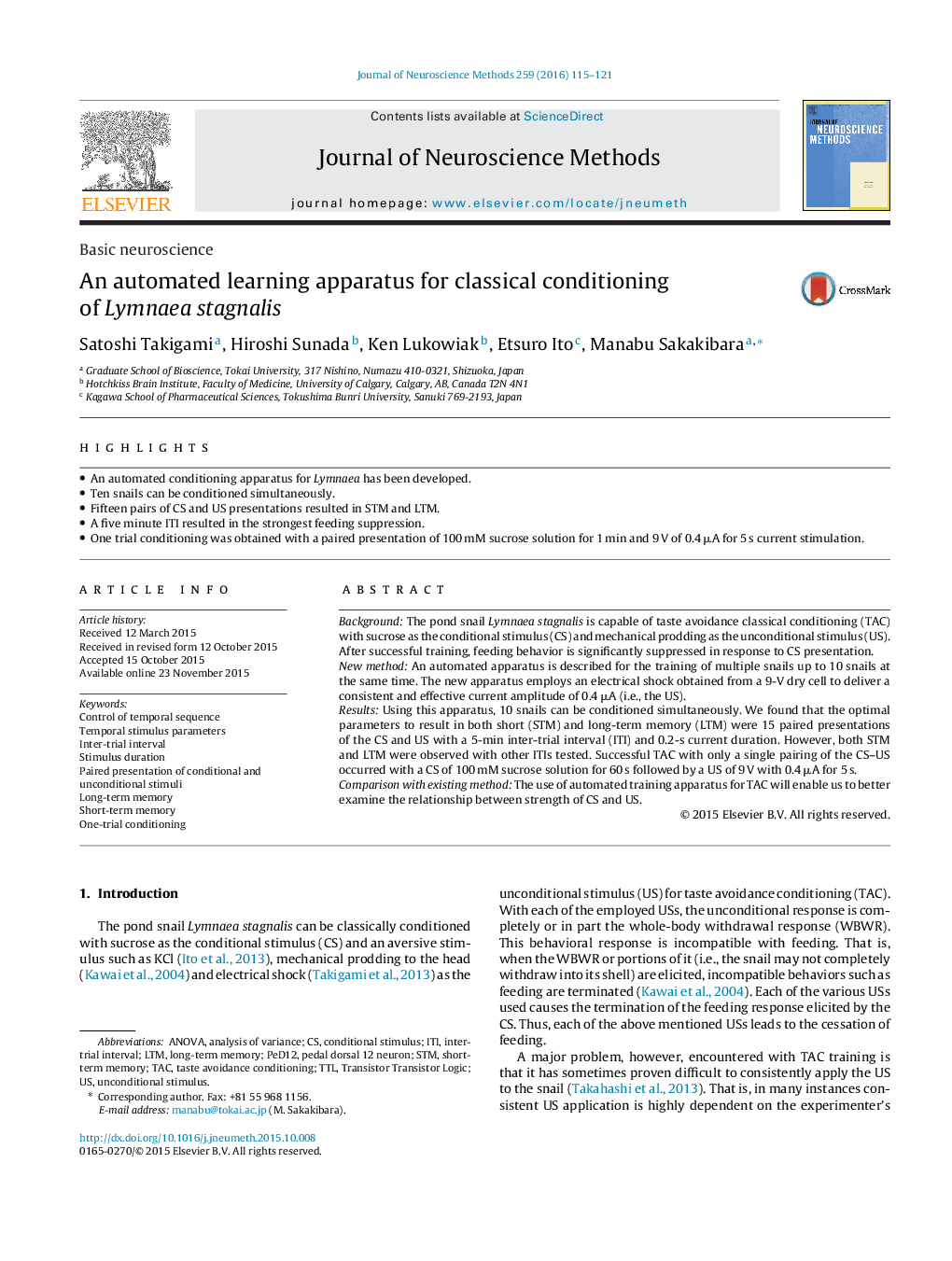| Article ID | Journal | Published Year | Pages | File Type |
|---|---|---|---|---|
| 6268010 | Journal of Neuroscience Methods | 2016 | 7 Pages |
â¢An automated conditioning apparatus for Lymnaea has been developed.â¢Ten snails can be conditioned simultaneously.â¢Fifteen pairs of CS and US presentations resulted in STM and LTM.â¢A five minute ITI resulted in the strongest feeding suppression.â¢One trial conditioning was obtained with a paired presentation of 100 mM sucrose solution for 1 min and 9 V of 0.4 μA for 5 s current stimulation.
BackgroundThe pond snail Lymnaea stagnalis is capable of taste avoidance classical conditioning (TAC) with sucrose as the conditional stimulus (CS) and mechanical prodding as the unconditional stimulus (US). After successful training, feeding behavior is significantly suppressed in response to CS presentation.New methodAn automated apparatus is described for the training of multiple snails up to 10 snails at the same time. The new apparatus employs an electrical shock obtained from a 9-V dry cell to deliver a consistent and effective current amplitude of 0.4 μA (i.e., the US).ResultsUsing this apparatus, 10 snails can be conditioned simultaneously. We found that the optimal parameters to result in both short (STM) and long-term memory (LTM) were 15 paired presentations of the CS and US with a 5-min inter-trial interval (ITI) and 0.2-s current duration. However, both STM and LTM were observed with other ITIs tested. Successful TAC with only a single pairing of the CS-US occurred with a CS of 100 mM sucrose solution for 60 s followed by a US of 9 V with 0.4 μA for 5 s.Comparison with existing methodThe use of automated training apparatus for TAC will enable us to better examine the relationship between strength of CS and US.
